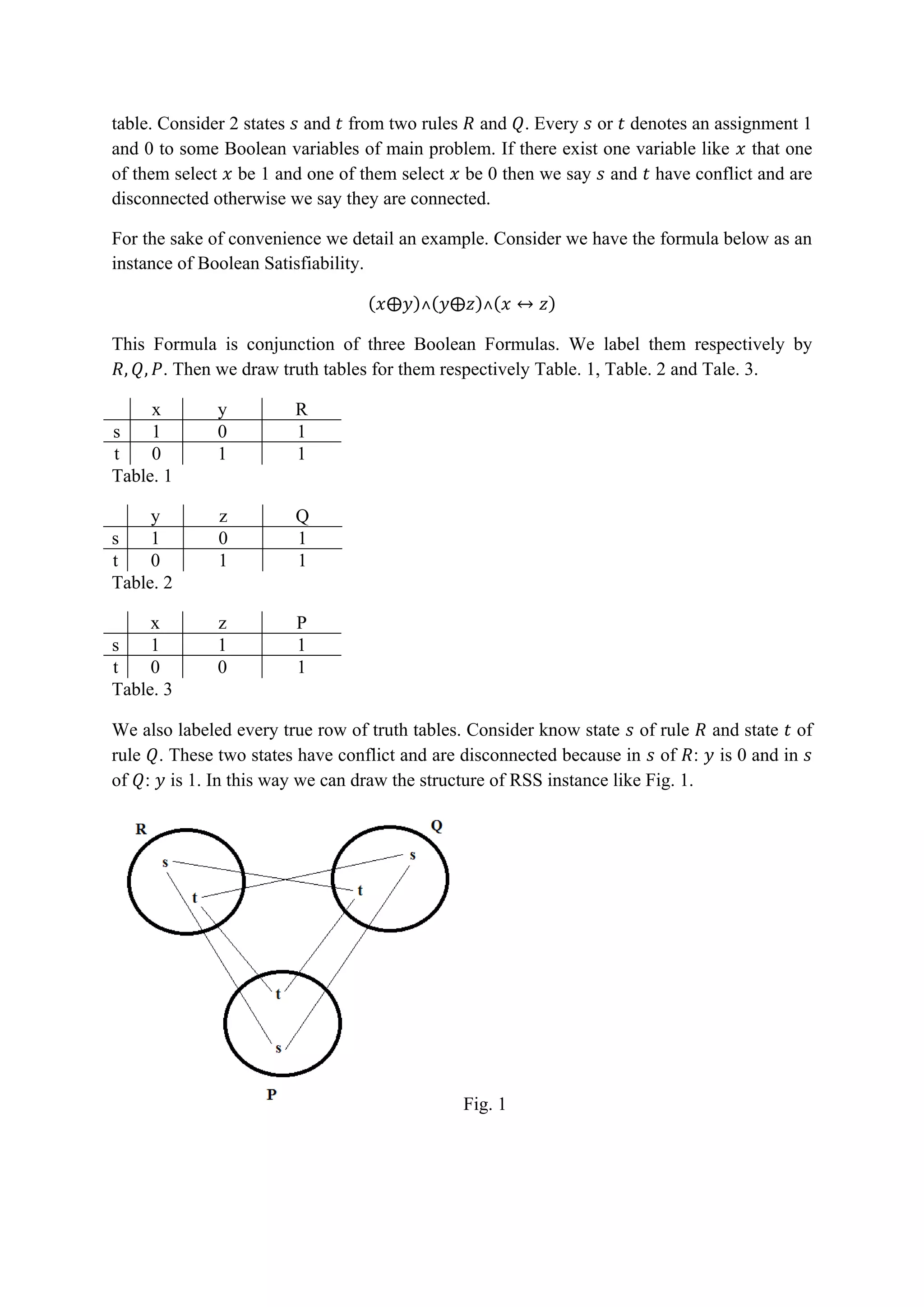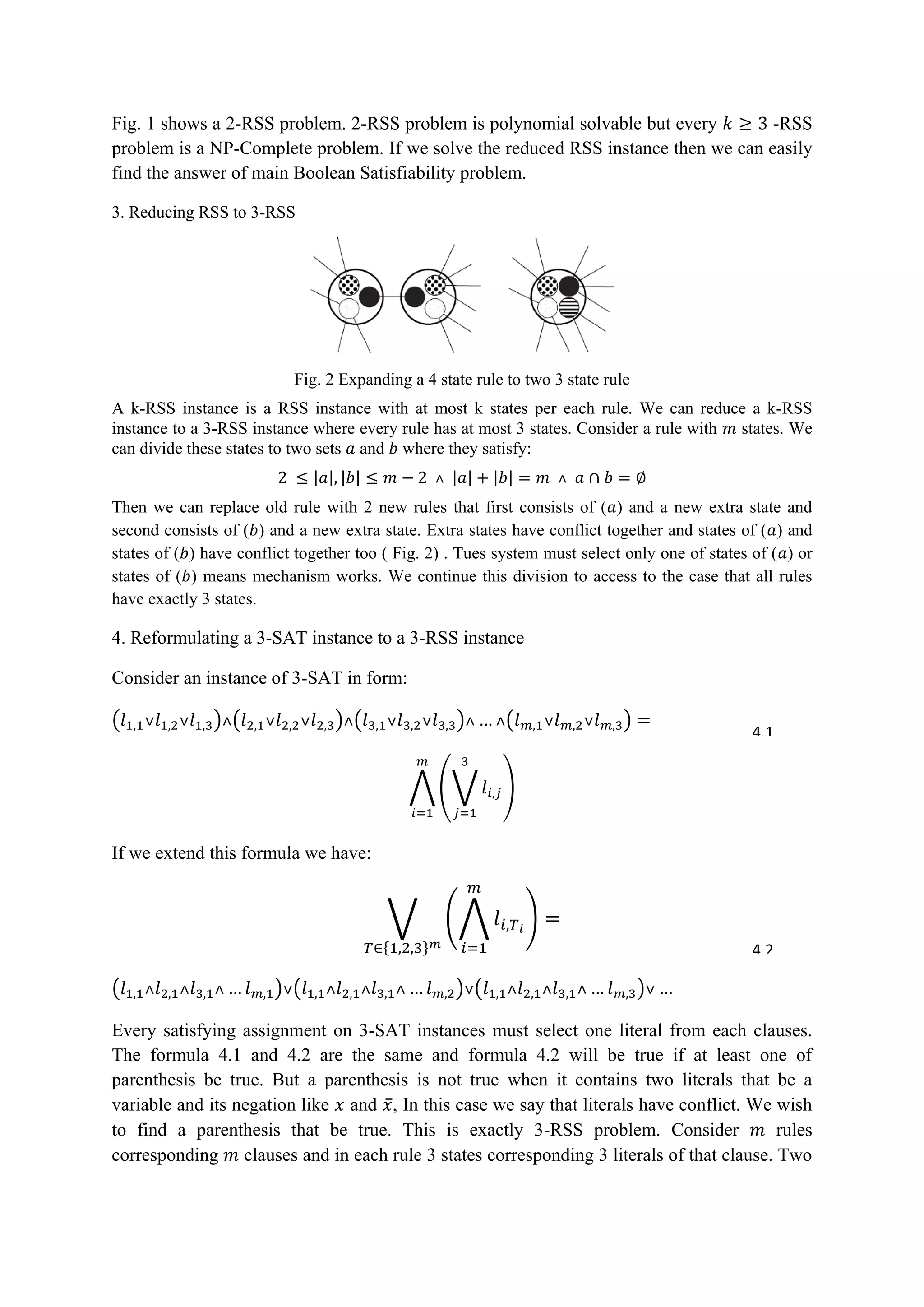This document discusses reductions between various NP-complete and NP-hard problems such as Boolean satisfiability, 3-SAT, maximum clique, and others. It introduces several new NP-hard problems and reductions between problems. Specifically, it shows reductions from Boolean satisfiability to rules states satisfiability (RSS), from RSS to 3-RSS, from 3-SAT and 3-RSS to each other, from a type of timetabling problem to 3-RSS, from k-SAT to k-maximum hyper clique, from maximum clique to 3-maximum hyper clique, from maximum clique to Max True 2-SAT, and from Max 2-SAT to a new problem called Max Var 2-



![states are disconnect iff corresponding literals be a variable and its negation. Now we have a
3-RSS problem.
5. Reformulating a 3-RSS instance to a 3-SAT instance
We can easily show a 3-RSS problem using Ternary Algebra ( see [1] ). In this case we have
several clauses defined on ternary variables. Each clause contains two literal and each
literal is negation of a color for example:
( ̅ ̅ ) ( ̅ ̅ ) ( ̅ ̅ )
For example the clause ( ̅ ̅ ) shows a conflict between red state of with green state
of . In general we can show a 3-RSS instance with this formula:
( ) ( ) ( ) ( )
⋀ (⋁ )
If we extend this formula we have:
⋁ (⋀ )
{ }
( ) ( )
The formula 5.1 and 5.2 are the same and formula 5.2 will be true if at least one of
parenthesis be true. But a parenthesis is not true when it contains three literals that be a
variable like in the forms ̅ and ̅ and ̅ ( If only two of them exist then can be
the third color ), In this case we say that literals have conflict. We wish to find a parenthesis
that be true. This is exactly 3-SAT problem. Please note that every literal is of the form ̅
or ̅ or ̅ . Consider Boolean variable corresponding clauses of 3-RSS and in each
Boolean variable 2 states corresponding 2 literals of that clause. Three states have conflict iff
corresponding literals be a negation of three colors of a variable. Now we have a 2,3-CSP
problem that is immediately a 3-SAT problem.
6. Reducing a type of Timetabling to 3-RSS
Timetabling problem is problem of assigning a program based on limitations between
resources of an education center like a high school or a university. Here we propose a type of
timetabling problem that is a NP problem and reduce this type of timetabling to 3-RSS
problem. Aim is to produce a weekly program for the center and resources are: 1- lessons, 2-
Times, 3-Teechers and 4-Rooms. For example lesson can be "Computational Complexity" or
"Designing Algorithms" and a time can be "Friday 9:30-11:00". We consider six conflict
between these resources. Fig. 3 shows these conflicts as every line defines a conflicts for
5.1
5.2](https://image.slidesharecdn.com/2e4830af-d1f2-49e6-814f-4b949a47713b-160504140055/75/NP-Completes-4-2048.jpg)


